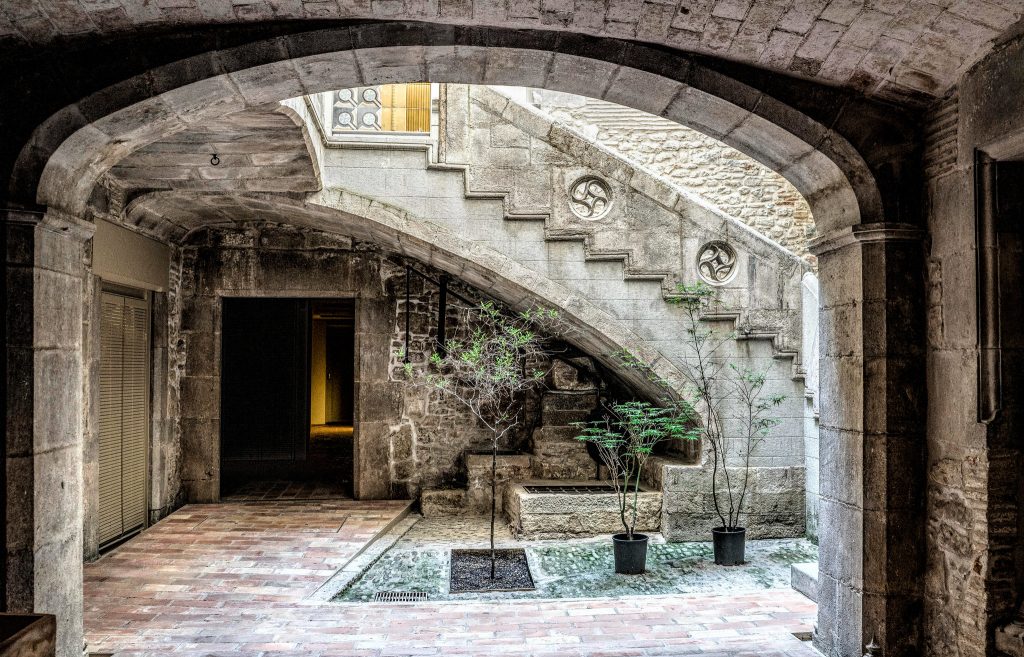Gerona was the second most important community in Catalonia, both for its size (1000 men and women in the twelfth and thirteenth centuries, but only 100 or so in the fifteenth) and for the quality of its scholars. Gerona was the home of Nahmanides, Johan ben Abraham Gerondi, Azriel of Gerona, Bonastruc da Porta, and Isaac the Blind.

Gerona’s Jewish history has been famous since 1980, when the discovery of Sant Llorenç, a forgotten lane in the call (the Catalan equivalent of a judería), brought to light a vivid image of Jewish life in the old town. Up to the thirteenth century, the Jews lived in houses that belonged to the cathedral chapter, around today’s Plaça dels Apostols. They gradually extended the quarter around the Carrer de la Força. The area is best toured on foot.
Gerona had three synagogues in quick succession. The first stood near the cathedral and was demolished in 1312 during construction work. The second was in the Carrer de la Força, probably at numbers 21-25, but it was closed in 1415 after the bull of Pope Benedict XII. The third synagogue was in use at the time of the expulsion and stood at 10 Carrer de la Força, where the municipality has set up de Bonastruc de Porta Center for Jewish Studies (Centro Bonastruc de Porta). It is possible this building also housed the kosher butcher shop. The first phase of restoration work has revealed the handsome brick architecture. A little further down the road, on the corner of Carrer Cundaro, stands the house inhabited by Nahmanides.
The cemetery was located on a hill still called Montjuic (Jews’ Mountain). In 1492 the Jews donated it to the knight Joan de Sarriera, who had helped the community during the anti-Jewish riots. Subsequent owners used the tombstones as building materials. Many of them have been retrieved and studied and are now superbly displayed in the Archaeological Museum (Museu Arqueologic), located in the cloister of Sant Pere de Galligants. Others are in the historical museum of Gerona (Museu Historia de la Civtat). These moving vestiges are notable for the quality of their sculpture and their texts.
Note also the jambs at the entrances to the old Jewish houses. At 5 Carrer de la Força, for example, the niche made for the mezuzah can still be seen. The Seminary Biblical Museum has a fifteenth century one found at 15 Carrer de la Força in 1886.
The municipal archives (Arxiu Municipal) displays some notable documents and contracts written in Hebrew and Judeo-Catalan as well as old book bindings made from Hebrew parchment.